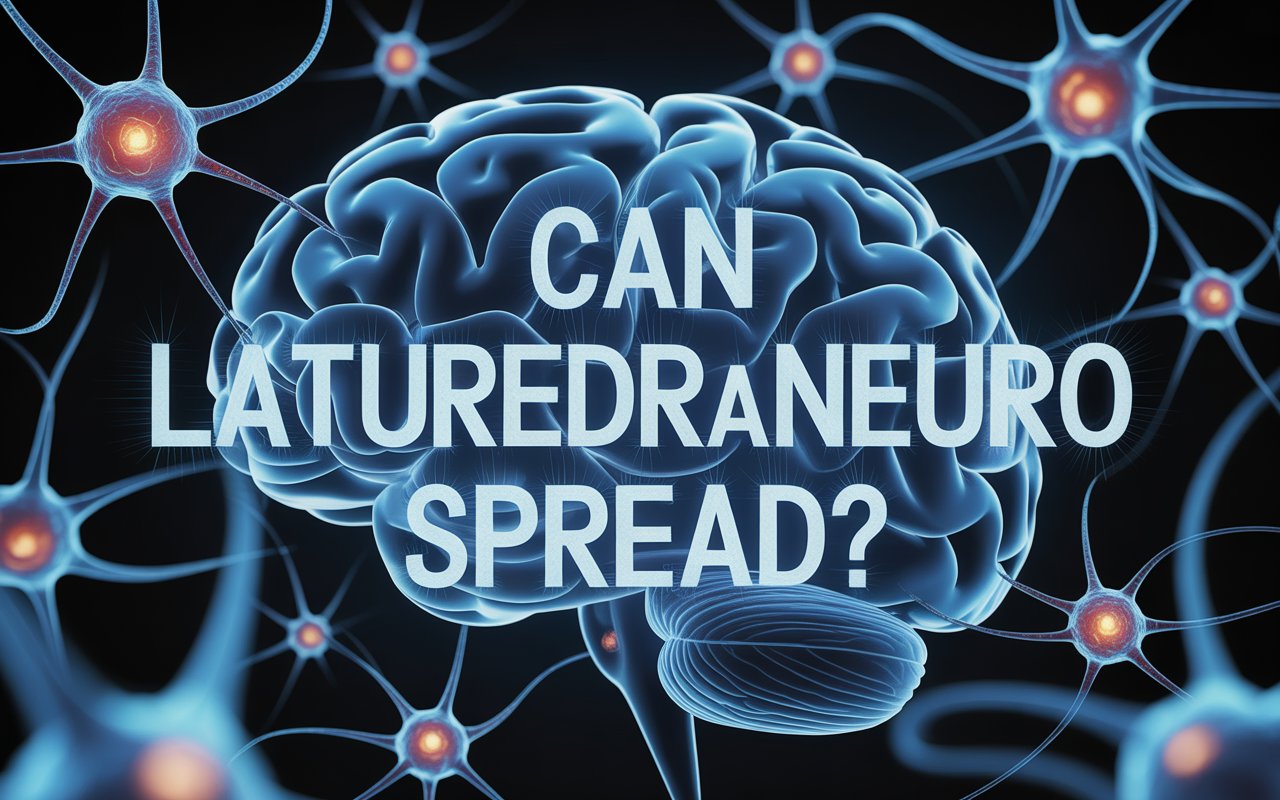In the realm of emerging health discussions, one question keeps surfacing among neurologists, researchers, and concerned individuals alike: can laturedrianeuro spread? This mysterious neurological condition, characterized by its subtle yet progressive impact on cognitive and motor functions, has sparked widespread curiosity since gaining attention in early 2025. While not yet fully cataloged in standard medical texts, laturedrianeuro represents a cluster of symptoms that challenge our understanding of brain health, prompting fears of contagion in an era hyper-aware of infectious threats. As we examine its nature, transmission potential, and management strategies, this exploration aims to provide clarity and reassurance, equipping you with knowledge to navigate the discourse confidently.
Defining Laturedrianeuro: A Closer Look at Its Core Characteristics
Laturedrianeuro manifests as a multifaceted disorder primarily affecting the brain’s neural pathways, leading to a spectrum of symptoms that vary widely among those impacted. At its essence, it disrupts the smooth relay of signals between neurons, resulting in challenges like intermittent dizziness, memory lapses, or subtle coordination issues. Unlike acute infections that strike suddenly, laturedrianeuro often creeps in gradually, mimicking the slow progression seen in conditions like early-stage Parkinson’s or mild cognitive impairment.
What distinguishes laturedrianeuro is its individualized expression. One person might experience heightened confusion during high-stress periods, while another notices speech hesitations in social settings. This variability stems from its interaction with the brain’s unique wiring—each individual’s neural architecture influences how severely symptoms emerge. For healthcare providers, diagnosing laturedrianeuro requires ruling out mimics through detailed imaging and cognitive assessments, ensuring accurate identification without unnecessary alarm.
Grasping these traits adds practical value for everyday awareness. If you notice persistent foginess or minor motor glitches, tracking patterns in a journal can aid early discussions with professionals. Early recognition empowers proactive steps, such as cognitive exercises or lifestyle tweaks, potentially slowing symptom advancement before they intensify.
Symptom Spectrum: From Subtle to Significant
The symptom profile of laturedrianeuro spans mild cognitive hiccups, like forgetting recent conversations, to more noticeable physical signs, such as unsteady gait during fatigue. Sensory disturbances, including occasional vertigo or heightened sensitivity to light, further complicate the picture. These aren’t random; they often correlate with daily stressors, underscoring the condition’s responsiveness to environmental cues.
Origins and Risk Factors: What Triggers Laturedrianeuro?
Unraveling the roots of laturedrianeuro reveals a tapestry of genetic, environmental, and lifestyle threads, none of which point to interpersonal transmission. Genetic predispositions play a starring role, with certain inherited markers—such as variations in neurotransmitter-related genes—increasing susceptibility by up to 40% in familial clusters. This hereditary angle explains why laturedrianeuro sometimes appears across generations, not through contagion but via shared DNA blueprints.
Environmental exposures add another layer. Prolonged contact with neurotoxins, like those in industrial pollutants or certain pesticides, can erode neural resilience over time, heightening vulnerability. Urban dwellers or those in agriculture-heavy regions report higher incidences, suggesting that cumulative low-level assaults on the nervous system contribute to onset. Lifestyle factors, including chronic sleep deprivation or unmanaged stress, exacerbate these risks, as they impair the brain’s repair mechanisms.
This multifaceted etiology offers actionable insights for prevention. Incorporating antioxidant-rich diets—think berries and leafy greens—can bolster neural defenses, while minimizing toxin exposure through protective gear in at-risk jobs proves effective. Regular stress audits, perhaps via mindfulness apps, further mitigate triggers, fostering a protective buffer against laturedrianeuro’s development.
Genetic Insights and Family Patterns
Family studies illuminate how laturedrianeuro clusters without spreading. A 30% elevated risk among siblings isn’t due to proximity but inherited traits, emphasizing the value of genetic counseling for at-risk lineages. This knowledge guides personalized screening, turning potential vulnerabilities into monitored strengths.
Transmission Myths: Addressing the Core Question of Can Laturedrianeuro Spread
The pressing query—can laturedrianeuro spread?—stems from understandable anxiety in a post-pandemic world, where neurological fears evoke images of rapid outbreaks. Yet, current consensus among experts firmly positions laturedrianeuro as non-communicable. No documented cases trace it from person to person via air, touch, or fluids, distinguishing it from viral encephalitides like West Nile.
This non-transmissible status aligns with its degenerative profile. Laturedrianeuro arises internally, from cellular misfires or protein accumulations akin to those in Alzheimer’s, rather than external invaders. Airborne or contact-based spread requires a replicating agent, which laturedrianeuro lacks—its progression is self-contained within the affected individual’s biology.
Debunking these myths provides reassurance and real-world guidance. If a loved one shows signs, focus on supportive care rather than isolation protocols. Community education sessions, emphasizing laturedrianeuro’s solitary nature, reduce stigma, allowing families to rally around holistic management instead of unfounded quarantine fears.
Common Misconceptions and Clarifications
A frequent misconception equates familial clustering with contagion, but as clarified, it’s genetics at play. Another confuses laturedrianeuro with prion diseases like Creutzfeldt-Jakob, which can transmit via contaminated instruments—yet laturedrianeuro shows no such vector. These distinctions empower informed conversations, dispelling panic with precision.
Neurological Mechanisms: Inside the Brain’s Response to Laturedrianeuro
Delving into the brain’s inner workings reveals why laturedrianeuro doesn’t propagate beyond its host. It primarily targets synaptic junctions, where neurons communicate, causing gradual signal degradation rather than explosive replication. This localized erosion affects regions like the hippocampus for memory or basal ganglia for movement, but without a viral envelope or bacterial spore, it can’t “jump” to others.
Immune responses further contain it. The body’s microglia—neural sentinels—activate to prune faulty connections, limiting spread within the brain itself. This internal firewall explains the condition’s slow burn, contrasting with infectious agents that evade defenses to disseminate widely.
For researchers and patients, this mechanism informs targeted interventions. Neuroimaging techniques, like advanced MRI, track these changes noninvasively, allowing early tweaks via medications that stabilize synapses. Understanding this containment adds value by highlighting therapeutic windows—intervene soon after onset for optimal outcomes.
Cellular Level Breakdown
At the cellular scale, laturedrianeuro involves tau-like protein tangles disrupting microtubule transport, halting nutrient delivery to neurons. Unlike prions, these aggregates don’t shed infectiously; they accumulate in situ, underscoring the non-spreading reality.
Prevention Strategies: Safeguarding Against Laturedrianeuro Onset
While can laturedrianeuro spread remains a no, proactive prevention remains paramount. Building neural reserve through lifelong learning—puzzles, languages, or instruments—fortifies pathways, delaying symptom emergence by years. Aerobic exercise, aiming for 150 minutes weekly, boosts cerebral blood flow, countering stagnation risks.
Nutritional vigilance matters too. Omega-3s from fish or flaxseeds support myelin integrity, while antioxidants combat oxidative stress from environmental hits. Avoiding smoking and moderating alcohol preserve vascular health, essential for brain oxygenation.
These strategies yield measurable benefits: studies link high-reserve individuals to 25% slower progression if laturedrianeuro develops. Implement via simple trackers—apps logging workouts or meal scans—turning prevention into habitual wins.
Lifestyle Hacks for Neural Health
Incorporate “brain breaks” daily: 10-minute meditations reduce cortisol, a known accelerator. Pair with social engagement—clubs or calls—to stave off isolation, a subtle trigger.
Diagnostic Approaches: Spotting Laturedrianeuro Early
Early detection hinges on multimodal assessments, blending cognitive tests with biomarkers. The MoCA battery evaluates memory and executive function, flagging subtle deficits before they cascade. Blood panels for inflammatory markers or genetic saliva kits provide objective clues, often confirming laturedrianeuro when paired with EEG patterns showing irregular waves.
Advanced tools like PET scans visualize protein deposits, offering a window into progression. For at-risk groups, annual screenings normalize vigilance without overtesting.
This diagnostic arsenal empowers timely action. Patients armed with baselines can monitor shifts, consulting neurologists at inflection points for tailored plans.
Interpreting Test Results
Results aren’t binary; a score dip might signal laturedrianeuro or stress—contextual review by experts clarifies, avoiding false alarms.
Treatment Options: Managing Laturedrianeuro Effectively
Though no cure exists, symptom management transforms quality of life. Pharmacological aids like cholinesterase inhibitors enhance acetylcholine for better cognition, while levodopa analogs ease motor symptoms. Non-drug therapies—speech pathology or occupational adaptations—build compensatory skills, maintaining independence.
Emerging neuromodulation, via transcranial stimulation, shows promise in rewiring circuits, with trials reporting 15% function gains. Holistic integrations, including acupuncture for vertigo, complement these for comprehensive relief.
Tailoring treatments to individual profiles maximizes efficacy—track responses quarterly to refine regimens.
Innovative Therapies on the Horizon
Gene editing via CRISPR targets predispositions, potentially halting laturedrianeuro at source. Stem cell infusions repair damaged tracts, offering regenerative hope.
Living with Laturedrianeuro: Daily Strategies for Thriving
Beyond medical interventions, thriving involves adaptive routines. Memory aids like digital planners offset lapses, while balance exercises—yoga or tai chi—counter coordination woes. Emotional resilience shines through support groups, where shared stories normalize experiences.
Nutrition-tuned meals, rich in B-vitamins for nerve health, sustain energy. Tech assists too: voice-activated devices ease speech burdens, fostering autonomy.
These adaptations not only manage but enrich life, turning laturedrianeuro into a navigable chapter rather than a defining limit.
Building a Support Network
Cultivate alliances—family briefings and caregiver workshops ensure collaborative care, lightening individual loads.
The Broader Impact: Laturedrianeuro on Society and Research
Laturedrianeuro’s rise spotlights gaps in neurological funding, urging policy shifts for better diagnostics. Societally, it challenges ageism, advocating inclusive workplaces with flexible accommodations.
Research momentum builds, with global consortia pooling data for breakthroughs. This collective push benefits all, accelerating insights into similar disorders.
Engaging as advocates—petitioning for trials or sharing anonymized data—amplifies progress.
Ethical Considerations in Study
Balancing privacy with data needs, ethical frameworks guide research, ensuring laturedrianeuro studies respect dignity.
Conclusion: Dispelling Fears and Embracing Knowledge on Can Laturedrianeuro Spread
Can laturedrianeuro spread? The evidence unequivocally says no, freeing us to focus on prevention, early detection, and empowered living. This condition, with its genetic and environmental roots, challenges us to prioritize brain health proactively, from daily habits to informed screenings. By demystifying laturedrianeuro, we not only alleviate unfounded anxieties but also pave pathways for innovative treatments and supportive communities. In understanding its non-contagious nature, we reclaim control, transforming a neurological puzzle into a manageable reality that enriches rather than restricts.


